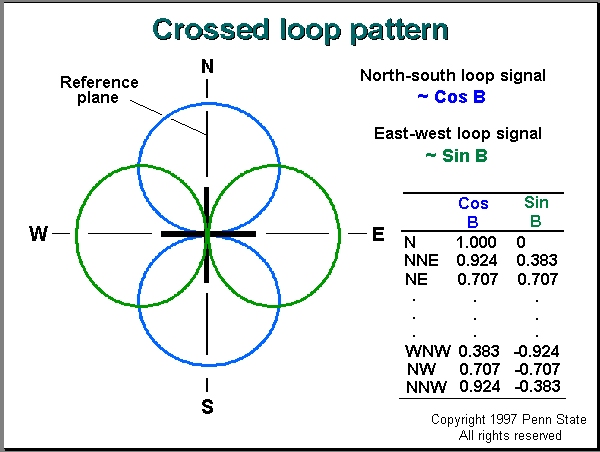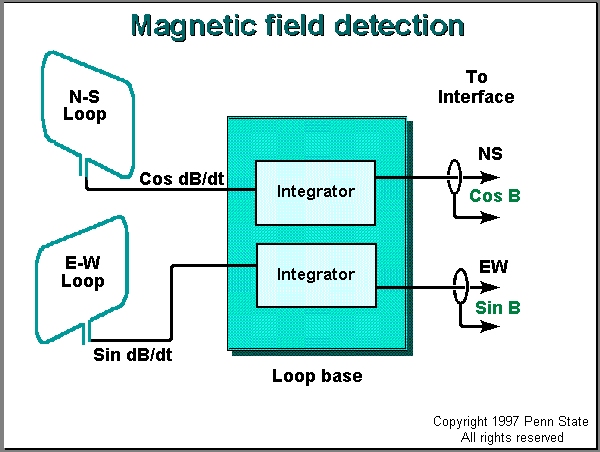




Radio direction finding
is an art almost as old as radio communication itself, and it is most often based
on the sensitivity pattern of a pair of loop antennas.

Loop antennas are most
sensitive to fields arriving in the plane of the loop, and have minimum
sensitivity to fields arriving at 90 degrees to that plane. For vertical
loops, which are small compared with the wavelength of received signals,
the sensitivity pattern is a function of the cosine of the bearing (direction
or azimuth) of the incoming field, as measured with respect to the plane
of the loop. Because there is not a unique cosine value of the signal for
fields arriving from either side of this plane, a second loop, placed at
right angles to the first, derives a second signal to remove this ambiguity.
The two loops together constitute the popular crossed loop antenna
configuration.
If the plane of the
first loop is oriented north to south and is considered the reference plane,
then the second, east to west, loop derives a signal according to the sine
of the incoming bearing. When this value is combined with the cosine of
the bearing, fields from any direction have a unique combination of signal
pairs. Because the loop signal voltages are a function of the rate of change
of the intercepted magnetic field, integrators are used in the signal pathways
to obtain each of the two (NS and EW) signal magnitude components.
These functions are performed
in circuits in a box at the base of the antenna array.
Finally, as phase distortions
from interactions between the voltage and magnetic components of the intercepted
field may occur, the loops must be electrostatically shielded, by forming
with coaxial cable, in order to respond only to the magnetic component
of the lightning radiation.

The relationship between the incoming magnetic field strength, B, in webers/square meter, and the integrator output voltage V is provided by equation (1) in the original antenna design paper by Krider and Noggle, which is